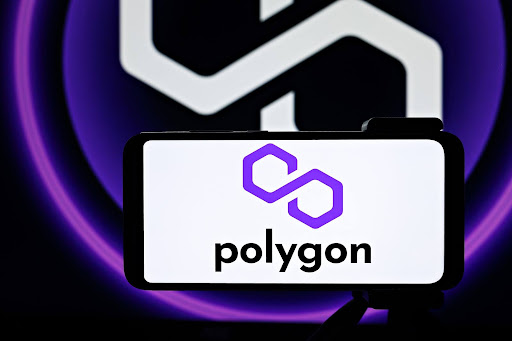Here’s When the Polygon Network Will Stop Using MATIC
18.07.2024 15:56 1 min. read Kosta Gushterov
On July 18, the Polygon network announced plans to update its native token MATIC to a cryptocurrency called POL, with the transition taking place on September 4.
According to Polygon Foundation’s, POL aims to provide the security of the blockchain as an aggregated network, liquidity pool and shared state across multiple chains.
The upgrade will occur in phases, and POL will replace MATIC as the token for gas and stacking activities for the Polygon chain.
Polygon’s road assured users that MATIC holders in the PoS chain do not need to take any action as their tokens will be automatically converted to POL.
Users using MATIC in Polygon’s zkEVM rollup, centralized exchanges, or Ethereum’s blockchain are provided detailed instructions in a blog post.
There are no immediate deadlines for them to migrate to POL, but the community will be allowed to set deadlines in the future.
Polygon described POL as a hyperproductive token designed to provide valuable services across any circuit in the Polygon network, including AggLayer.
The community expects that POL will play a key role in Polygon’s stacking hub, which will be released in 2025. This includes features such as block generation, zero-knowledge (ZK) proof generation, and participation in data availability committees (DAC).
-
1
Bitcoin Dominance Nears Key Resistance — Is Altseason Coming Next?
13.07.2025 17:00 2 min. read -
2
Stellar (XLM) Surges 60% in 7 Days Amid Breakout and Partnerships
17.07.2025 14:33 2 min. read -
3
XRP Surges Toward $3: Main Factors Driving the Rally
16.07.2025 12:18 2 min. read -
4
Fartcoin Price Prediction: FARTCOIN Could Rise to $2.74 After Major Breakout
17.07.2025 16:01 3 min. read -
5
Ethereum Overtakes Bitcoin in Retail FOMO as Traders Shift Focus to Altcoins
17.07.2025 8:05 2 min. read
XRP Eyes Next Target as Bullish Crossover Sparks 560% Surge
XRP is back in the spotlight after crypto analyst EGRAG CRYPTO highlighted a powerful historical pattern on the weekly timeframe—the bullish crossover of the 21 EMA and 55 SMA.
Top 5 Most Trending Cryptocurrencies Today: Zora, Pudgy Penguins, SUI and More
Crypto markets are buzzing with momentum as several altcoins post double-digit gains and surging volumes.
Sui Price Jumps 14% to $4.26 amid ETF Hopes
Sui (SUI) surged 14% in the past 24 hours, reaching $4.26 as bullish technical patterns, Bitcoin’s rebound, and renewed ETF speculation pushed the altcoin higher.
HBAR Mirrors 2021 Cycle as Key Breakout Test Approaches
Hedera Hashgraph (HBAR) is closely tracking its 2021 price behavior, according to crypto analyst Rekt Capital.
-
1
Bitcoin Dominance Nears Key Resistance — Is Altseason Coming Next?
13.07.2025 17:00 2 min. read -
2
Stellar (XLM) Surges 60% in 7 Days Amid Breakout and Partnerships
17.07.2025 14:33 2 min. read -
3
XRP Surges Toward $3: Main Factors Driving the Rally
16.07.2025 12:18 2 min. read -
4
Fartcoin Price Prediction: FARTCOIN Could Rise to $2.74 After Major Breakout
17.07.2025 16:01 3 min. read -
5
Ethereum Overtakes Bitcoin in Retail FOMO as Traders Shift Focus to Altcoins
17.07.2025 8:05 2 min. read


